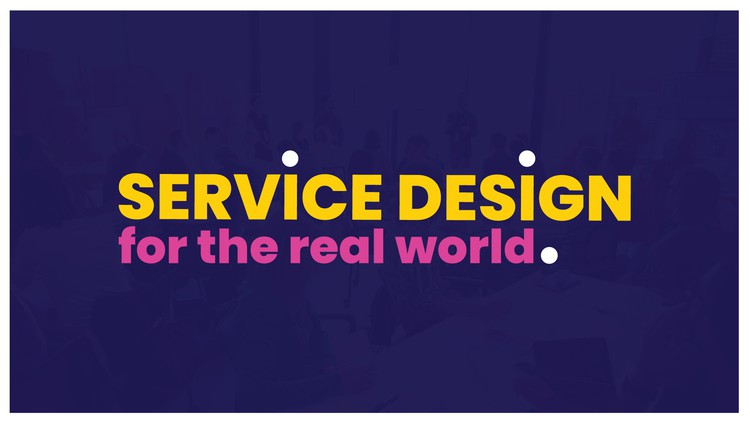
Industry experts share the content we wish we’d had when we were getting started
What you will learn
An overview of the end-to-end Service Design process and methodology
Key considerations and practical tips for applying Service Design in an organizational context
The basics of qualitative customer research and synthesis
How to use lo-fi prototypes to validate concepts and ideas
Effective ideation techniques & facilitation
Stakeholder management for Service Design
The basics of developing journey maps, service blueprints and other artifacts
Business Model Canvas for Service Design
How to prepare for a job in Service Design
Description
This is the course we wish we had when we started our Service Design careers.
Tools and frameworks alone won’t make you a great Service Designer. Most Service Design happens within existing companies and organizations. By understanding the real challenges and barriers to putting Service Design into practice you will be better prepared for the reality of actually doing the work. This is one of the only courses that go beyond methodology alone to focus on how to apply Service Design in an organizational context.
This course includes:
- A comprehensive introduction to the Service Design process
- 5 Recorded activities (we walk you through activity templates with pre-recorded facilitation)
- A resource list to support your learning beyond this course
Learn from experienced industry professionals who have:
- Established and scaled in-house Service Design teams in multiple companies across industries (Telecom, Insurance, Financial Services, Legal, and Retail)
- Been recognized with the Service Design Global Network award
- Been actively teaching and mentoring students and industry professionals in Service Design for 10+ years
- Are regularly invited to speak at events, host workshops, and share their thoughts on the evolution and future of Service Design
At the end of this course you will:
- Become deeply familiar with the overall Service Design methodology and be confident in your ability to speak to it.
- Have a meaningful understanding of key phases of work in Service Design: Research, Ideation, Prototyping, and how they fit together as a process
- Know how to clearly communicate the value of Service Design
- Appreciate the importance of stakeholder management and organizational context when practicing Service Design
- Learn what core skills and specialized skills you need to develop in order to succeed at landing your first role or further progressing in your career as a Service Designer
English
language
Content
INTRODUCTION TO SERVICE DESIGN
Course Welcome + Meet Your Instructors
What is a service?
Parts of a Service
Why Service Design?
Service Design Methodology
Service Design Case Study
Q&A
RESEARCH & DISCOVERY
Creating a Shared Understanding
Research Overview
Research Basics & Logistics
Synthesis
Writing an Insight
Q&A
IDEATION
What is Ideation?
How Our Brains Work
Structured Ideation Techniques
Creating the Conditions for Great Ideation
Facilitating Ideation
Prioritizing & Selecting Ideas
Q&A
PROTOTYPING & TESTING
What is Prototyping?
Why Prototype?
What to Prototype
Prototyping Techniques
Testing Your Prototypes
Q&A
STAKEHOLDER MANAGEMENT
Establishing Trust
Mapping Your Stakeholders
Stakeholder Personas
Q&A
ARTIFACTS & DELIVERABLES
What is Mapping?
What is a Journey Map?
Creating a Journey Map
What is a Service Blueprint?
Finding the Right Format
Q&A
BUSINESS MODELLING
Understanding the business model
The Business Model Canvas
Business Model Canvas Example
Q&A
BECOMING A SERVICE DESIGNER
Service Design Core Skills
Service Design Specialized Skills
Where does Service Design live?
Getting a Service Design job
Getting started
Q&A
RESOURCES & ACTIVITIES
Activity: Creating a Research Plan
Activity: Stakeholder Mapping
Activity: Ideation Warm-Up
Activity: Ideation Techniques
Activity: Business Model Canvas
Additional reading & resources